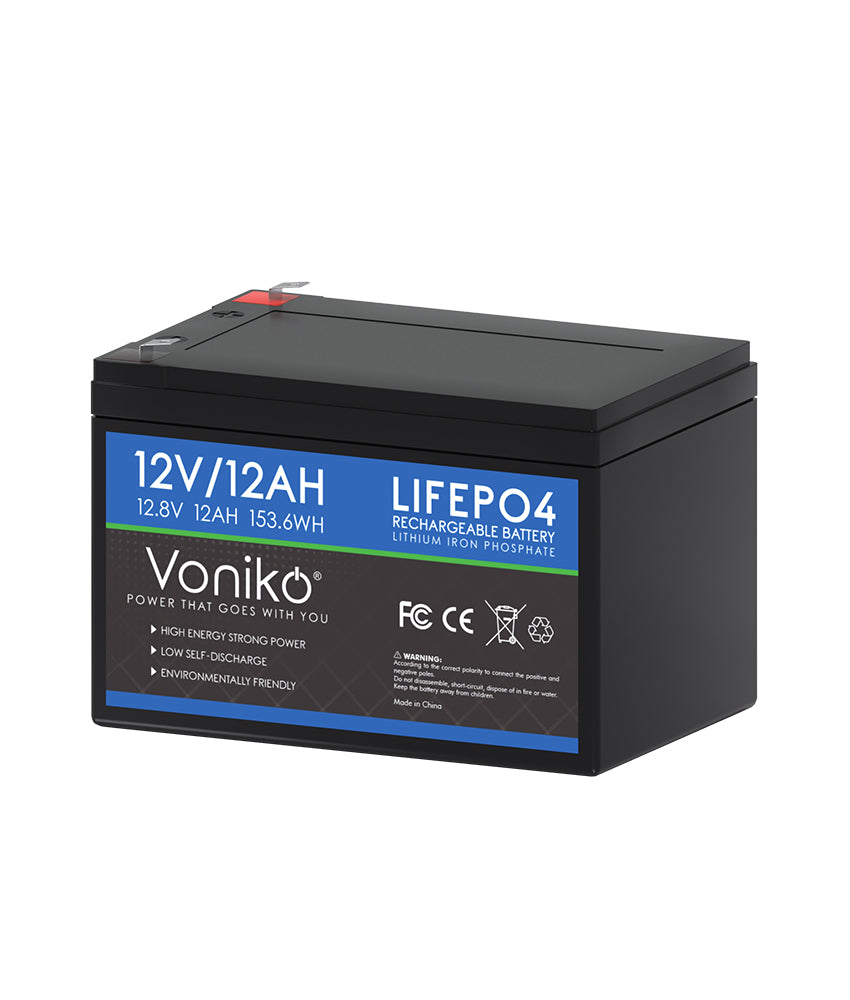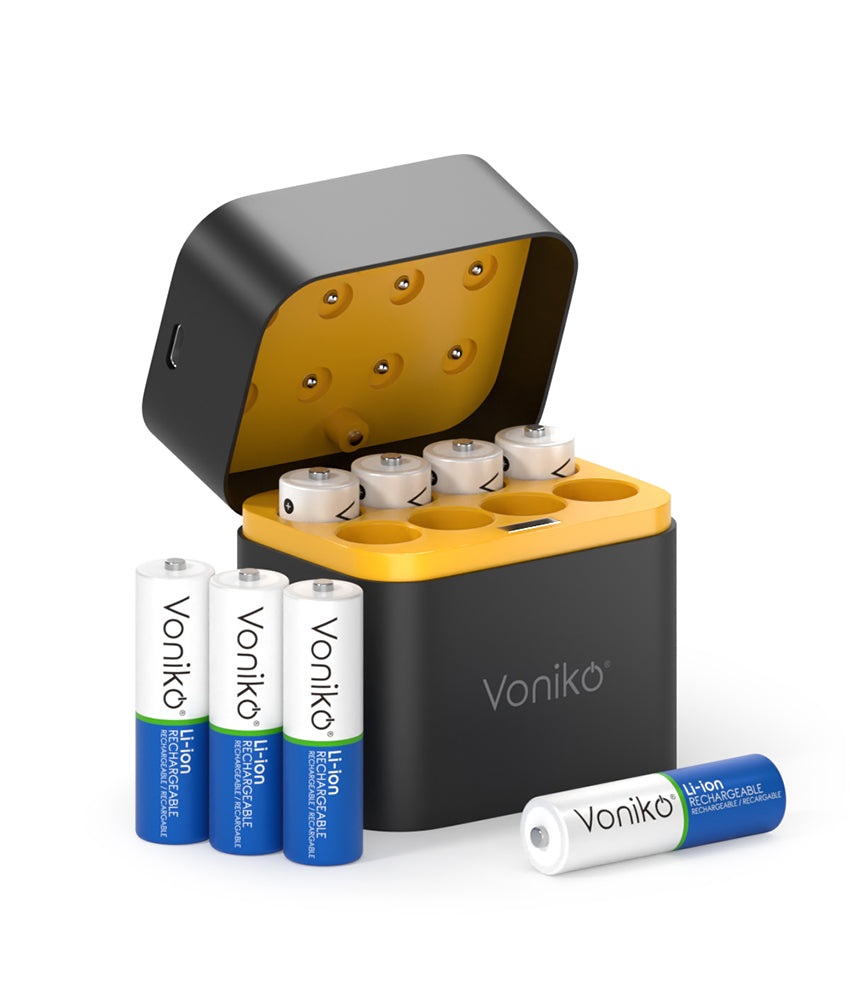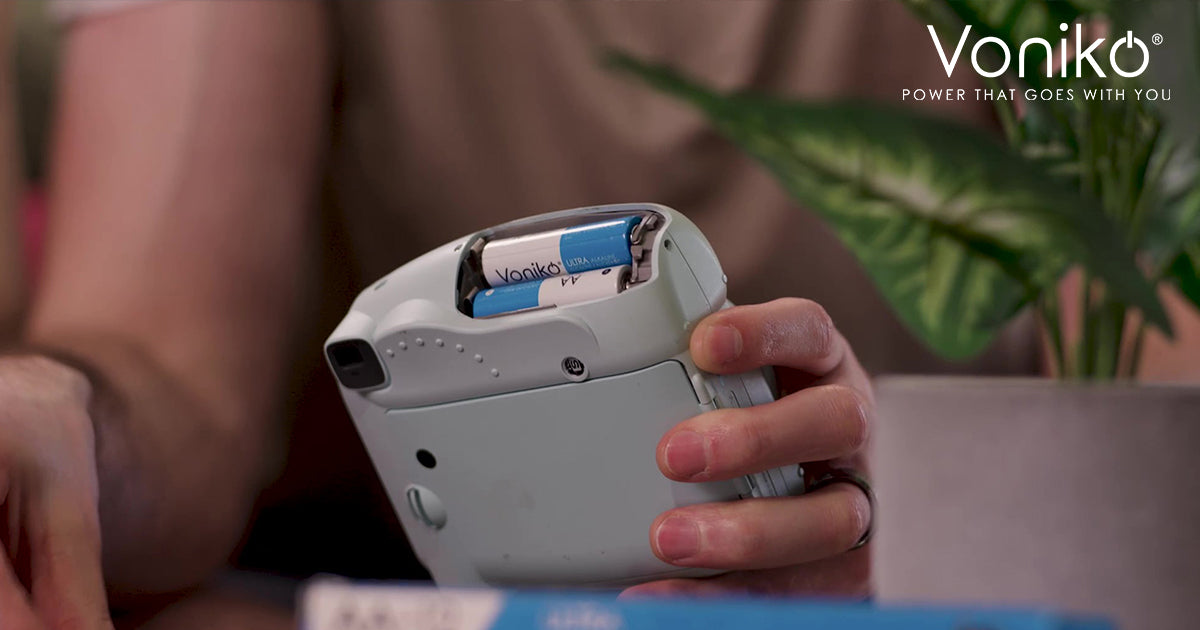Batteries keep our world running, from TV remotes to flashlights, children’s toys, and emergency alarms. But knowing exactly when to replace your batteries isn’t always obvious. Waiting too long can mean dead devices when you need them most, but replacing them too early wastes money and resources. At Voniko, we want to help you get the most out of every battery—alkaline, lithium, C, D, or button cell—so your devices are always ready when you are.
The Risks of Old or Dead Batteries
Old or dying batteries don’t just mean inconvenience—they can cause bigger problems. Devices may malfunction, lose memory, or, in the worst cases, experience battery leakage that damages the electronics inside. According to the U.S. Consumer Product Safety Commission, battery leakage accounts for thousands of device failures every year. Regularly checking and replacing batteries helps protect your investments and keeps your home running smoothly.

How Do You Know a Battery Needs Replacing?
Most people wait until something stops working, but there are plenty of early warning signs:
- Dim lights: Flashlights or lamps getting noticeably weaker.
- Unresponsive buttons: Remotes or toys need harder presses or don’t respond immediately.
- Device resets: Clocks, alarms, or timers lose time or reset themselves.
- Intermittent operation: Devices turn off randomly or fail to start.
- Low battery warning: Many modern devices have indicators—don’t ignore them!
Pro Tip: If your device is acting up, try swapping in a fresh battery before assuming it’s broken.
How Long Do Different Batteries Typically Last?
Battery life depends on the device, usage, and storage conditions. Here’s a quick reference table for common battery types:
| Battery Type | Average Lifespan (in use) | Shelf Life (unused) |
|---|---|---|
| Alkaline (AA, AAA) | 1-2 years | 5-10 years |
| C & D Alkaline | 2-3 years | 5-10 years |
| Button/Cell | 1-2 years | 3-5 years |
| Lithium (AA, 9V) | 3-5 years | 10+ years |
Source: Battery University, 2023
Keep in mind that high-drain devices (like digital cameras) will use up batteries faster than low-drain ones (like clocks).

When to Replace Batteries for Safety Devices
Some devices are too important to leave to chance. Smoke detectors, carbon monoxide alarms, and medical devices require special attention. The U.S. Fire Administration recommends replacing batteries in smoke alarms at least once a year, even if they seem to be working.
Remember: Many smoke alarms now use sealed lithium batteries that last up to 10 years—check your device’s manual!
How It Affects When You Should Replace
Storing batteries in cool, dry places can help them last longer. Heat, humidity, and exposure to direct sunlight will shorten a battery’s life—even if it’s not in use. If you find old batteries in a hot garage or car, it’s a good idea to replace them, even if they’ve never been used.
Quick Battery Storage Tips:
- Keep batteries in their original packaging until you need them.
- Avoid mixing old and new batteries in a device.
- Don’t store loose batteries where they can touch each other.
How to Test a Battery: Simple Ways to Check at Home
You don’t always need fancy equipment to test your batteries. Here are a few easy methods:
- Use a Battery Tester: Affordable testers are available online and can quickly tell you the charge level.
- Swap Test: Replace the battery with a new one—if the device works, the old battery was the problem.
- Digital Multimeter: For those handy with tools, a multimeter can read voltage to check if a battery has dropped below usable levels.
Did you know? Alkaline batteries are considered “dead” below 1.0V, while fresh ones measure around 1.5V.
Why Proper Replacement Matters
Replacing batteries at the right time isn’t just about convenience. Leaking or corroded batteries can harm the environment if not disposed of correctly. According to the EPA, over 3 billion batteries are thrown away annually in the U.S.; proper disposal and recycling help minimize environmental damage.
Best Practices:
- Take used batteries to local recycling centers.
- Never burn or incinerate batteries.
- Avoid throwing batteries in household trash.
Typical Replacement Timelines for Common Devices
Here’s a helpful breakdown of how often you should check and replace batteries in your most-used devices:
| Device | Battery Type | Check/Replace Every |
|---|---|---|
| TV Remote | AA/AAA Alkaline | 12 months |
| Wall Clock | AA Alkaline | 12-24 months |
| Smoke Detector | 9V/Lithium | 12 months (alkaline); 10 years (lithium) |
| Wireless Mouse | AA/AAA Alkaline | 6-12 months |
| Flashlight | D or AA Alkaline | 12 months |
| Hearing Aid | Button/Cell | 1-2 weeks |
How to Get the Most Out of Your Batteries
Replacing batteries doesn’t have to be a guessing game. By staying aware of the signs, keeping track of battery lifespans, and practicing good storage and disposal habits, you’ll keep your electronics running longer and safer.
Voniko Tip: Mark your calendar for battery checks—especially for safety devices. A little planning goes a long way!
For more tips on maximizing battery life and safety, check out Voniko’s full range of reliable, long-lasting batteries for every device in your home.
References:




















